Yesterday we introduced a video centre to the website, where we plan on uploading short videos (20 to 30 seconds) of our birds. Currently we are having an issue with sound, but are currently working to rectify the issue.
Also, it has only been about a week since we bought the full spectrum UV lighting system for the birds, and it really does make a huge difference, not only to the birds attitudes (they seem happier and more relaxed), but also makes it easier to appreciate them. Plus, its so much easier now to see the plum coloured glow on the heads of the adult Cherry finches, most noticably on Orion, the male Cherry.
Following on from our finch chicks being named two days ago, we have now produced this nice file to capture the finch family tree so far.
 | ourfinch_family_tree.xls | | File Size: | 3366 kb | | File Type: | xls |
Download File
And seeing as we keep discovering new features everyday, here is a slideshow of Darwin doing some stretch exercises. | |
The Cherry and Bengalese chicks which hatched January 2012 have now been named. Sadly we are not going to list the names and images in this blog, as we would only be duplicating the updates made to the 'Bengalese' and 'Cherry' pages of this site. As such, please see the bottom of the respective pages for new images and details. Hope you enjoy our choice of names.
We always find it hard to get an image of our birds in action, especially when flying. Some birds seem to dive from their perches before considering where they will land, while others take a while setting up the move.
Luckily we managed to get this nice shot of Plum, our female adult Cherry finch, and felt it was deserving of its own post.
We hope we manage to get more great pictures like this > | |
Today we decided the finch chicks and respective parents were ready to be split up, as the one cage has been over crowded for a few weeks while we waited for the chicks to be independent for a week.
As such, the Zebras got moved into the old large cage, kitted out with a spiral piece which they used to adore. We also put in a pile of alfalfa hay for them, so now Darwin is hard at work.
The birds have now been split as follows:
1) Zebras in one cage as they fight with everyone else!
2) Cherry adults and chicks together with two Bengalese adults and two Bengalese chicks;
3) Two Bengalese adults with remaining eight Bengalese chicks.
While each of our large cages are designed for six birds each, and the current setup is still a bit over crowded, it is better than is has been for the last few weeks, and quite a few finches appear to appreciate the change.
Additionally, this little chap (pictured below) began practicing to sing today! | Now the birds have been split up appropriately, we have prepared a list of names for the chicks, so stay tuned to find out what they will all be called! |
| | A lot of advise online suggests your birds should be given a bath regularly (which in alot of cases appears to relate to 3 days), but our finches seem to love bathing so much that they let you know it, and want a bath every day. Some even try to bath in the water bottles if you withhold the real bath!
For the last few days however, the adult Cherry finches have been soaking them selfs more than usual, so much so in fact that at first they can not even fly that well.
We enjoy letting our finches bath. Most days, as soon as we put the bath on, the finches will be in it splashing away within the 1st minute. |
With our Bengalese and Cherry juvaniles being 5 to 6 weeks old today, their colours have developed more since they first fledged. This is most noticable in the chocolate self Bengalese finches.
When the Bengalese laid a load of eggs across two nests, we were originally unsure whose eggs were whose as there was one male with three females. However, once the eggs hatched and the chicks had developed their feathers, we were confident which chicks belonged to which females.
When we first bought the Bengalese finches, we wanted birds with obvious differences in genetic makeup, and we luckily ended up with the following:
Female - Fawn Pied
Female - Chocolate Self
Female - Chocolate Pied
Male - Pure White
At first we thought the pure white might have just been a heavily pied fawn, as the bird store (which usually seperates out rarer genetics to charge more) was just selling him at the standard price for a Bengalese finch. However, once he mated with the females, the resulting chicks have made us fairly confident he was a pure white.
So far, the resulting genetics for the chicks appear to be:
Fawn Pied + Pure White = Fawn Pied, Fawn Washed Pied, Fawn Washed Pied, Pure White
This resulting set up does not suggest the male was a pure white, until this happened:
Chocolate Self + Pure White = Chocolate Self, Chocolate Self, Chocolate Washed Self, Chocolate Washed Self, Chocolate Washed Self, Chocolate Washed Self
What is bizare however is that 3 of these chocolate chicks have a white bib under their beak and white eye brows (in pretty much is the exact same locations), and one has a single white tail feather. Plus, we have never heard of or seen if chocolate washed is even possible, but four of the chicks are clearly too dark to be fawn, but too light to be chocolate, and the colour does not look right for chestnut.
At the moment the finches are living in 2 large breeding cages. These are 120cm long, 50cm deep and 50cm high. We chose these cages because they are stackable and give the finches room to fly backwards and forwards. As the cages are not bars all round, there is less worry of the finches getting their legs or nails caught, plus mess only leaves the cages in one direction. 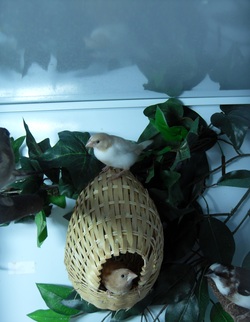 The cages include silk leaves and vines hanging on the back. The silk leaves are more decorative, but the silk vines are good for hanging nests on, plus the Cherries and Bengalese finches enjoy sleeping on them as it gives them cover.
The cages came with plastic perches and small feeders, but we opted for seed troughs which were approximately three times longer, and wooden perches of varying widths. We also included pedi perches to help maintain short nails.
The bottom of each cage has two slide out trays, which are invaluable for cleaning while minimising finch stress levels.
To encourage breeding the bottom of each cage is laid with dust free hay on newspaper. The cages also have dividers, which allow you to divide each cage into equal halves.
Originally we used daylight bulbs in the bird room, but we have recently purchased a UV lighting system designed for reptiles. The lighting gives full spectrum lighting, with UVA and UVB reaching most of the cage with its 30cm effective range.
The finches get fed foreign finch seed mix daily, with millet, egg food and veggies as treats. Originally, treats were given every 2 or 3 days, but once the Bengalese finches had chicks, we have been feeding them millet, egg food and veggies daily, in addition to the seed mix. We make the egg food our selves by crushing up hard boiled eggs. Small trays are also included which contain a mix of coal and cuttlefish, which act as a more soluble form of grit.
Our finches love bathing, so we give them fresh water in an external finch bath for an hour each day.
Hi, my name is Alistair, and my wife's name is Victoria. We started keeping finches just over 1 year ago. We were both new to keeping birds but we had read information in books and online beforehand to help prepare ourselves.
Originally we got two Zebra finches, one male called Darwin and one female called Florence, in November 2010. We bought the largest cage we could get at the time, 18" x 14" x 26", but soon up sized to a larger cage, as we thought the first cage seemed a bit small. The second cage was approximately 31" x 19" x 32".
We tried to discourage breeding, and removed eggs, replacing them with plastic ones, but the Zebras kept trying. We guessed they wanted company, but we wanted to control the population for the time being. Eventually, we decided to get two more finches in August 2011, but this time two Bengalese finches. We got a Chocolate Self called Donovan and a Fawn Pied called Luna. Originally we thought Donovan was a male and Luna was a female, but neither really did anything to give away either gender.
When they were finally combined, the finches got on well, the Zebras seemed excited and stopped trying to keep eggs. However, Zebras naturally get territorial and Bengalese are docile, so the Zebras chased the Bengalese every now and then. We regularly adjusted the inside of the cage to prevent the Zebras establishing territory, which helped for a week or so at a time.
The relationship was bizarre, neither Zebra would mess with Donovan, as he would just stand tall and tower over them both, but the Zebras would beak fight with Luna and she would just fly away. However, eventually Luna had had enough and thought back, finally resulting to holding onto the perch and flapping her wings while fighting back. This then resulted in the Zebras freaking out and standing down most of the time from then on in.
In September 2011 we moved house. Once we settled in, we found a nice bird shop and bought two Cherry finches and two more Bengalese finches. The Cherries were a female called Plum and a male called Orion, and the Bengalese were a female called Lilly and a male called Apollo. The new Bengalese were easy to sex as Apollo started singing within 24hrs of us buying him, and sang to Lilly non-stop all day.
Again, once it was time to combine the birds, we put the Zebras in the original cage and the original Bengalese with the new Bengalese and Cherries in the larger cage. This was only temporary while we bought two new large cages which were approximately 47” x 20” x 20”, and could be stacked. The finches then remained in the same groups but in the new cages. The cages were kitted out with silk leaves and silk vines along the back, and hay for the bottom. The finches were all very happy and got on well.
We then decided to give both cages some nests one in the Zebra cage and two in the Bengalese and Cherry cage, and soon found out that Donovan was in fact a female. Apollo decided to have eggs with Luna in one nest, then eggs with Donovan in the other nest one week later. In the meantime the Cherries decided to build their own nest out of the hay in the silk vines, directly above Donovan's nest.
Luna laid 6 eggs and Donovan laid 8 eggs, but we also found two random eggs on the bottom of the cage, so put them in Luna’s nest with her eggs. While we used to remove eggs to control the population, this time we let them keep the eggs to see what would happen, as we guessed the Cherries and Bengalese would have little success for their first time.
6 eggs in Luna’s nest hatched and a week later 6 eggs in Donovan’s nest hatched. Luna and Lilly teamed up to feed Luna’s chicks, while Donovan and Apollo fed Donovan’s. The Cherries were unsuccessful so we moved them out and put them in the other cage with the Zebras, who were also unsuccessful. The Zebras try to argue with the Cherries every now and then, but the Cherries are so surprisingly agile that they easily out manoeuvre them every time.
After a week, the first lot of chicks were strong enough to make quite a bit of noise, but two were clearly making a different noise to the rest. Eventually it turned out these two were in fact Cherries, most likely the two eggs we found on the cage floor.
It has now been nearly six weeks since the first six chicks hatched, and it has been nearly two weeks since Donovan’s six chicks fledged. Today, one of Luna’s chicks was practicing to sing. The chicks seem almost independent now, and the younger six are learning quicker and their older siblings. At most we hear begging occur once or twice a day, if ever now. Next week we plan on moving the Zebras and adult Cherries to the older large cage, and split the Bengalese finches between the two large stacked cages.
Many people ask if we plan on selling any of the young, but we're hoping to keep them all, possibly getting another large cage while we look at the idea of building an indoor aviary.
|
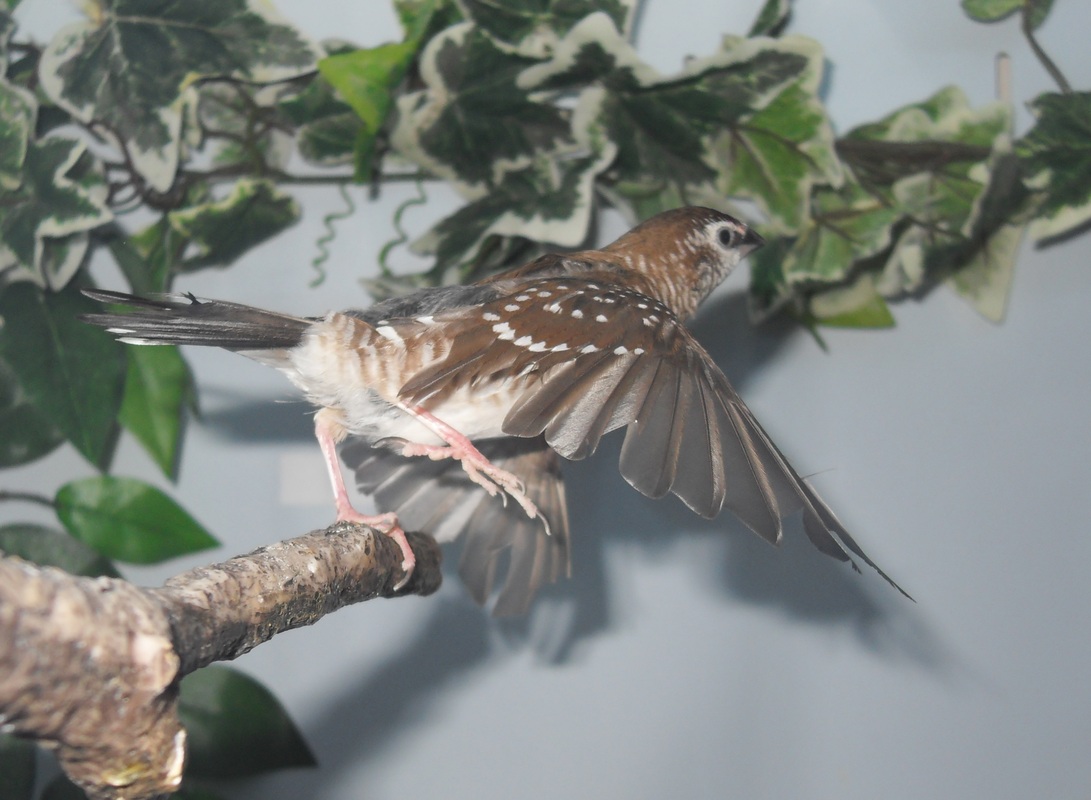
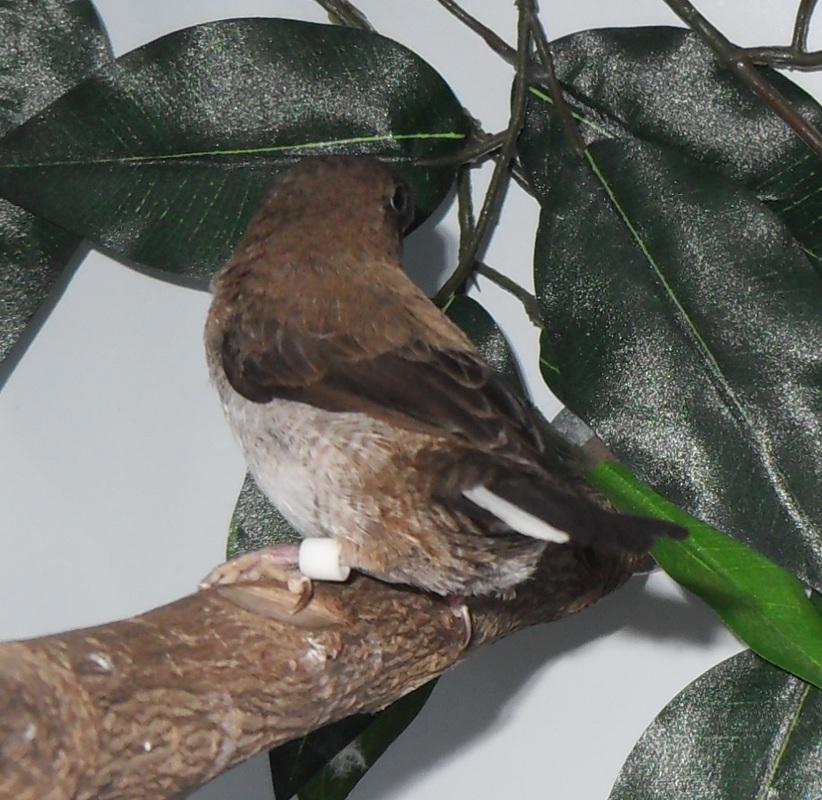
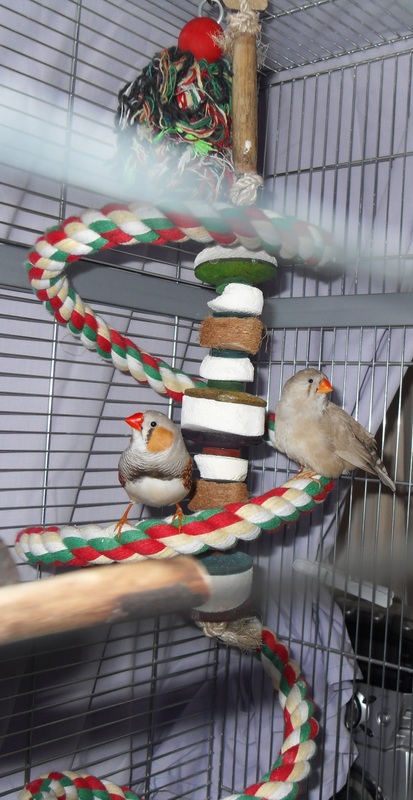
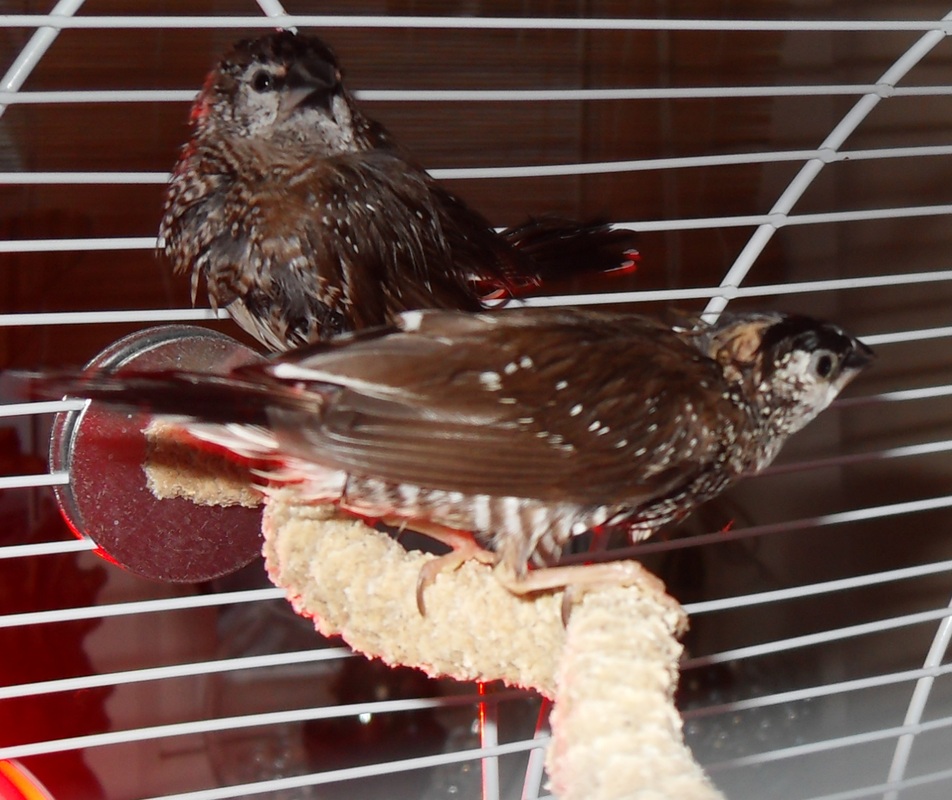
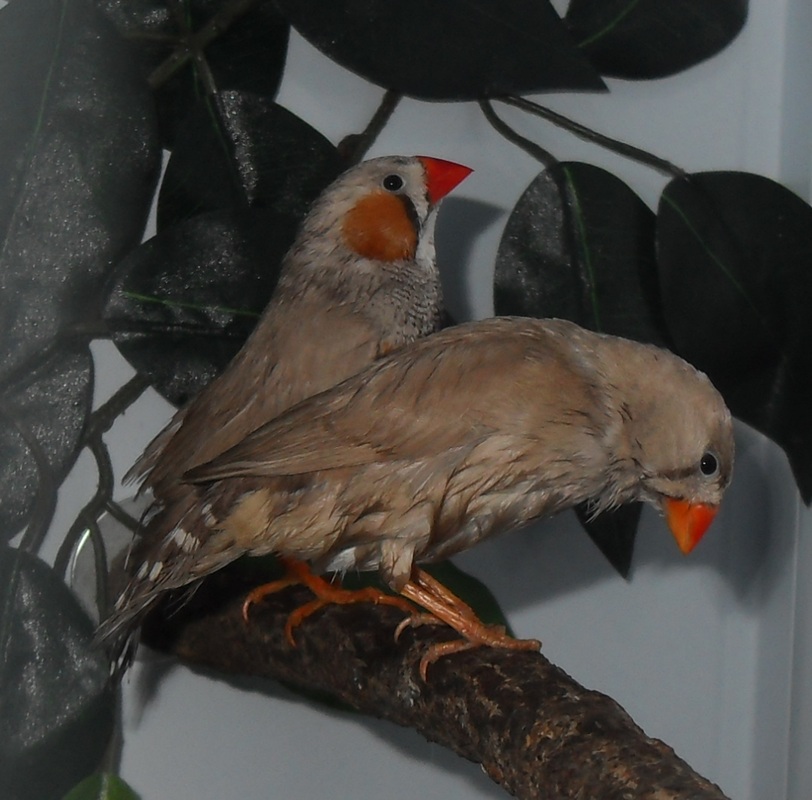
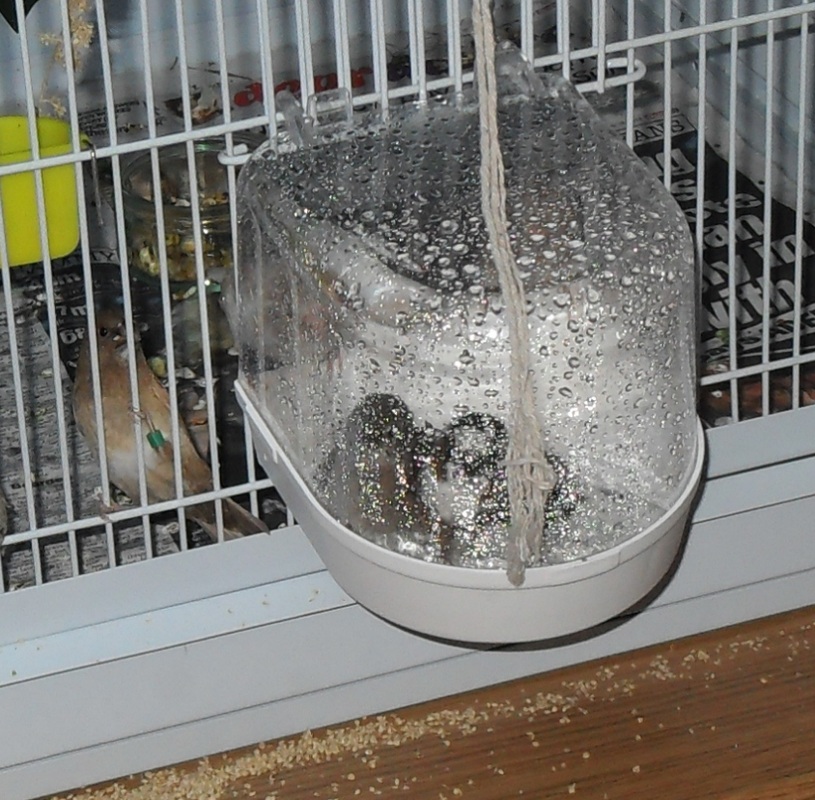
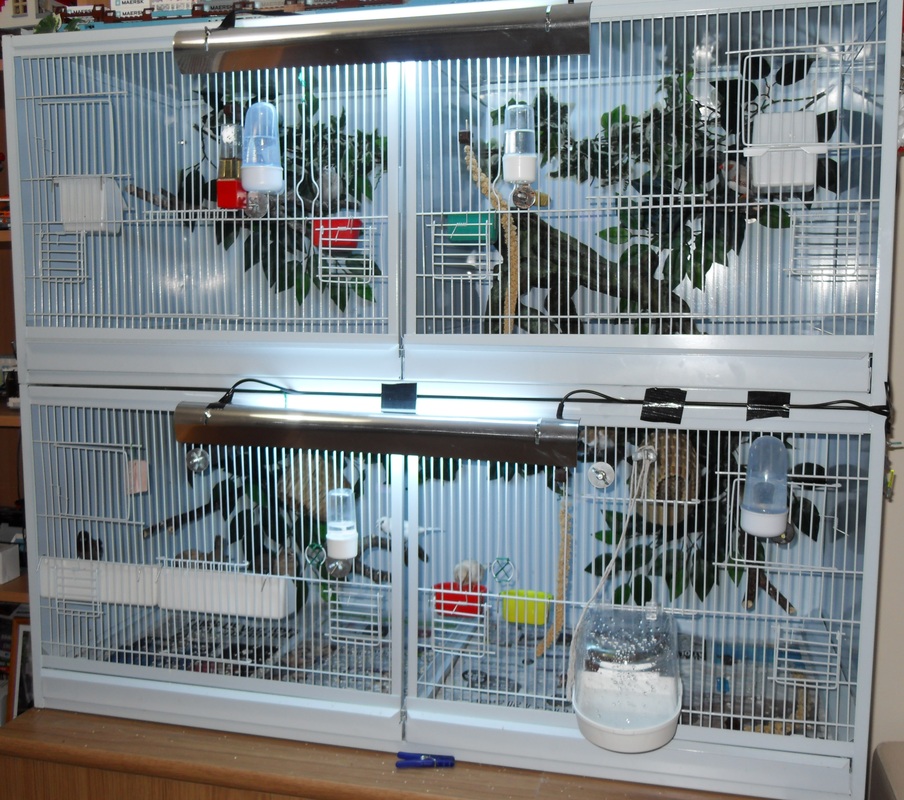

 RSS Feed
RSS Feed